
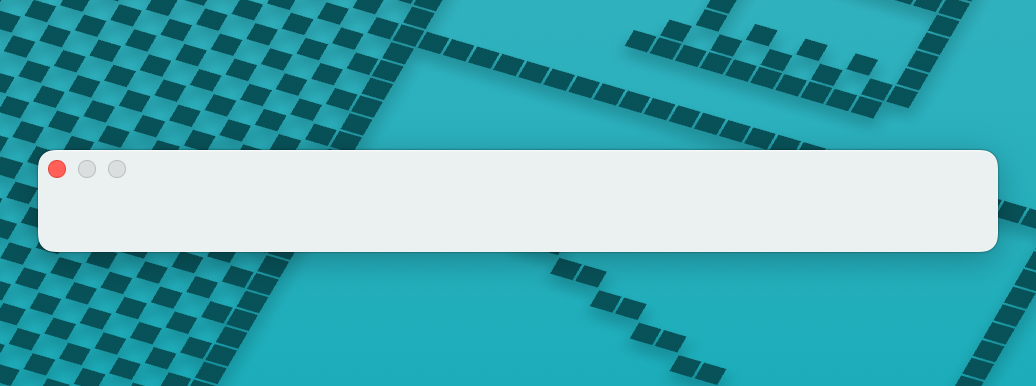
...and Execution
This began, as software often does, as a blank canvas of an Xcode SwiftUI project, and a lot of questions. Most of the questions did not have great answers, in terms of recreating a Control Strip. Likely for security reasons, most of the original controls are not accessible to third-party developers.
The project already existed, however, so what else could it do?
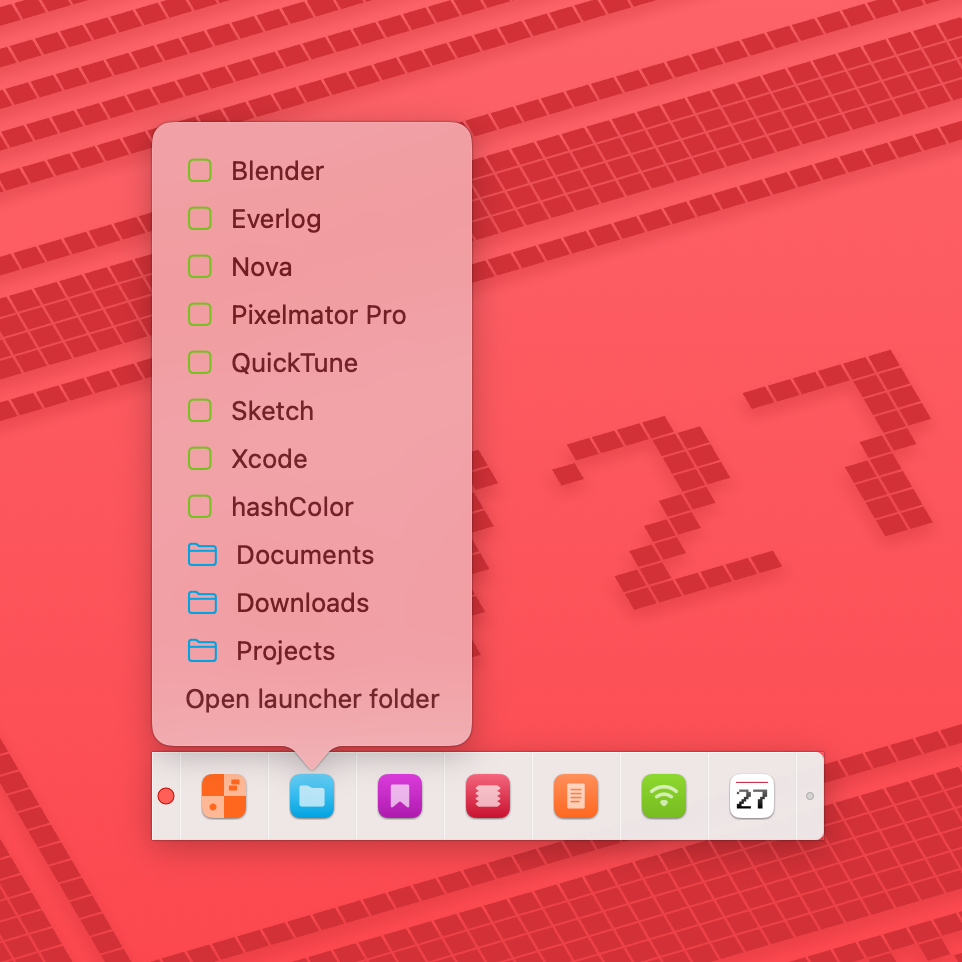
The first tile would be an easy one: a simple app, file and folder launcher, a small tribute to the former Apple Menu Items folder. Anything can be added to the menu by dragging it over the icon (which places an alias of the file in an accessible folder), or placed in the folder itself.
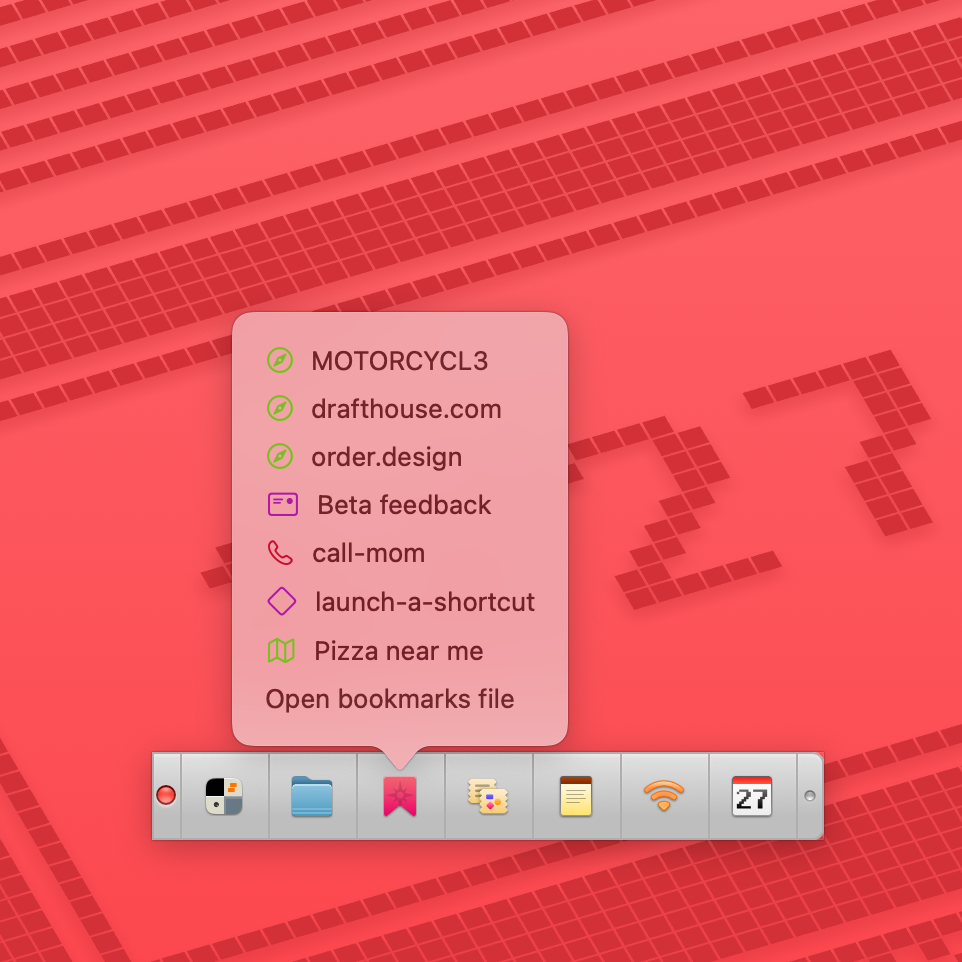
For the second tile, revisiting the old Cyberdog notebook. Beyond simple browser bookmarks, it is a convenient place to store all kinds of urls, providing a shortcut for launching servers, FaceTime calls, Maps searches, and even running Shortcuts.
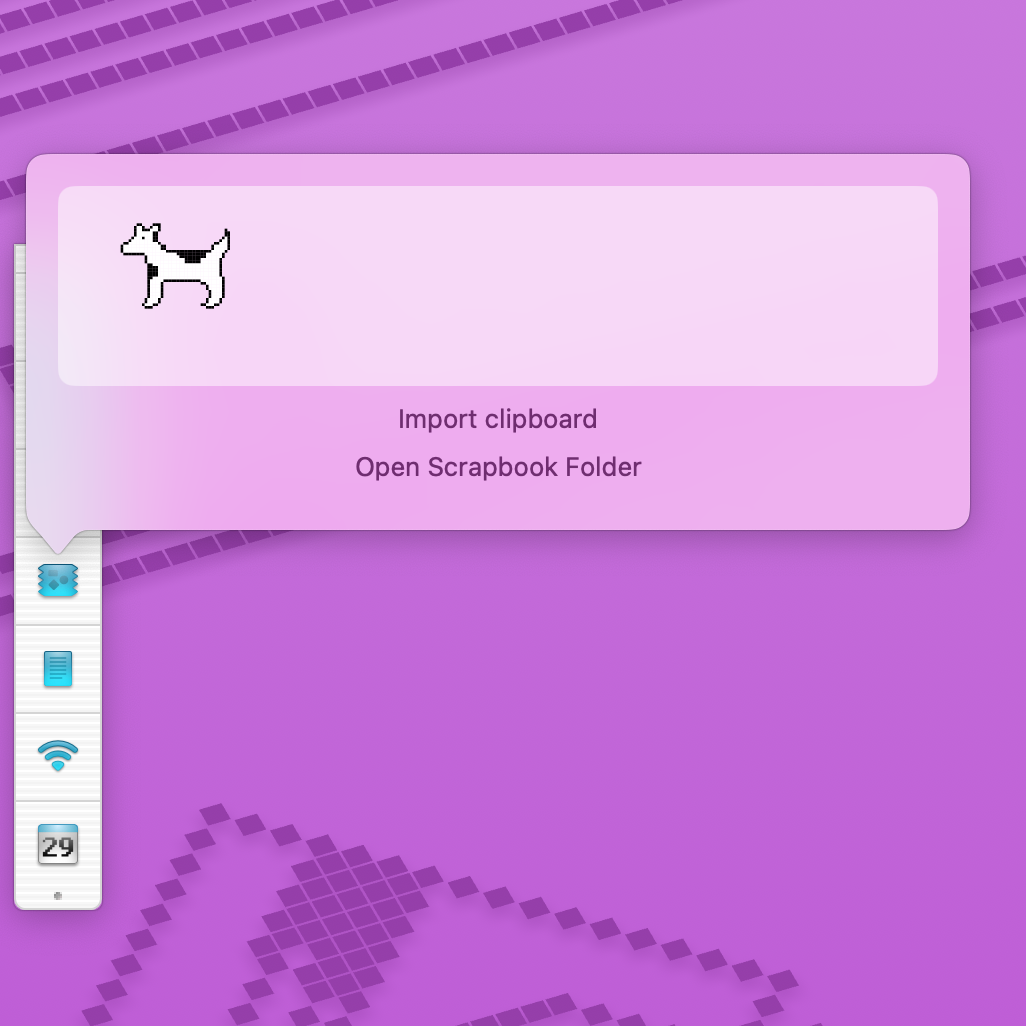
For the third tile, the scrapbook, something of a barebones clipboard manager for text snippets, images and files. These can be added via drag-and-drop, or the clipboard. These also have a corresponding folder that can be accessed from the Finder.
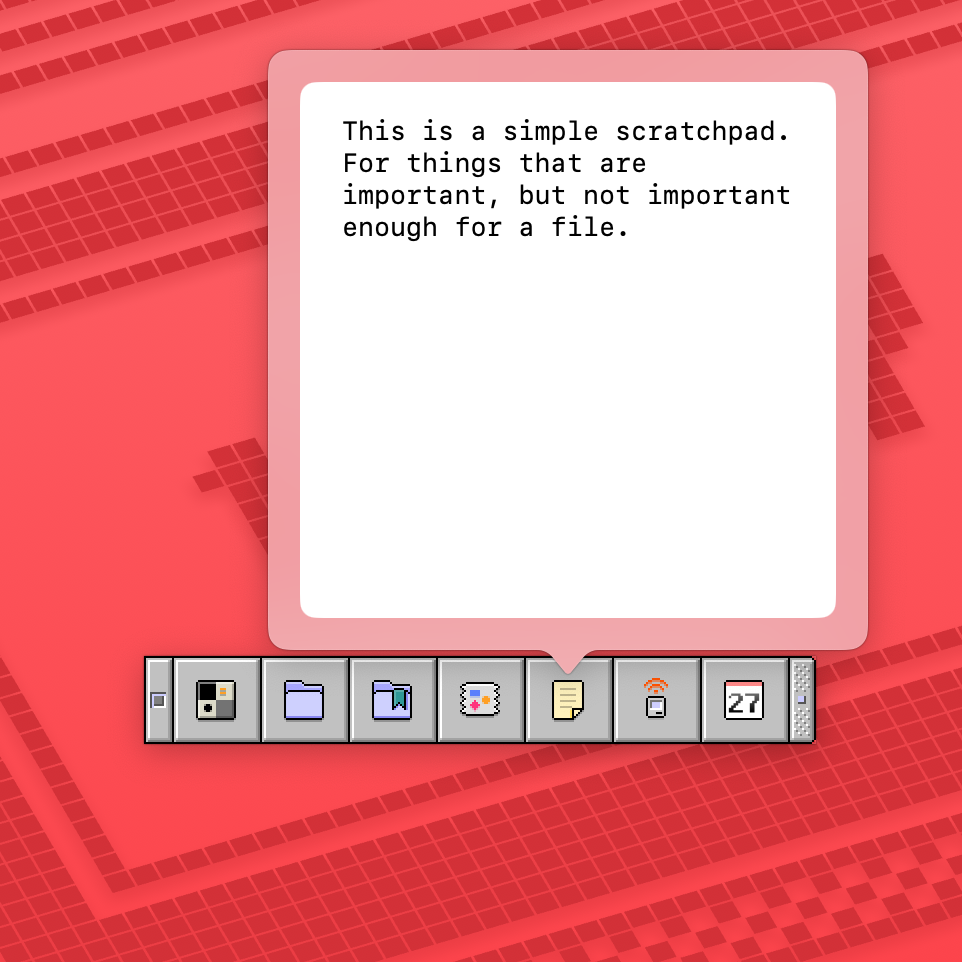
For the fourth tile, a notebook in the spirit of the original. A piece of text that doesn't need to be named, filed, organized. Just stored temporarily. As with the other tiles, this data is accessible.

The additional tiles are less than workhorses, but explorations of what can be done. The calendar tile could easily be expanded upon, and the Network tile is simply a status indicator for the connection. These can be turned off.
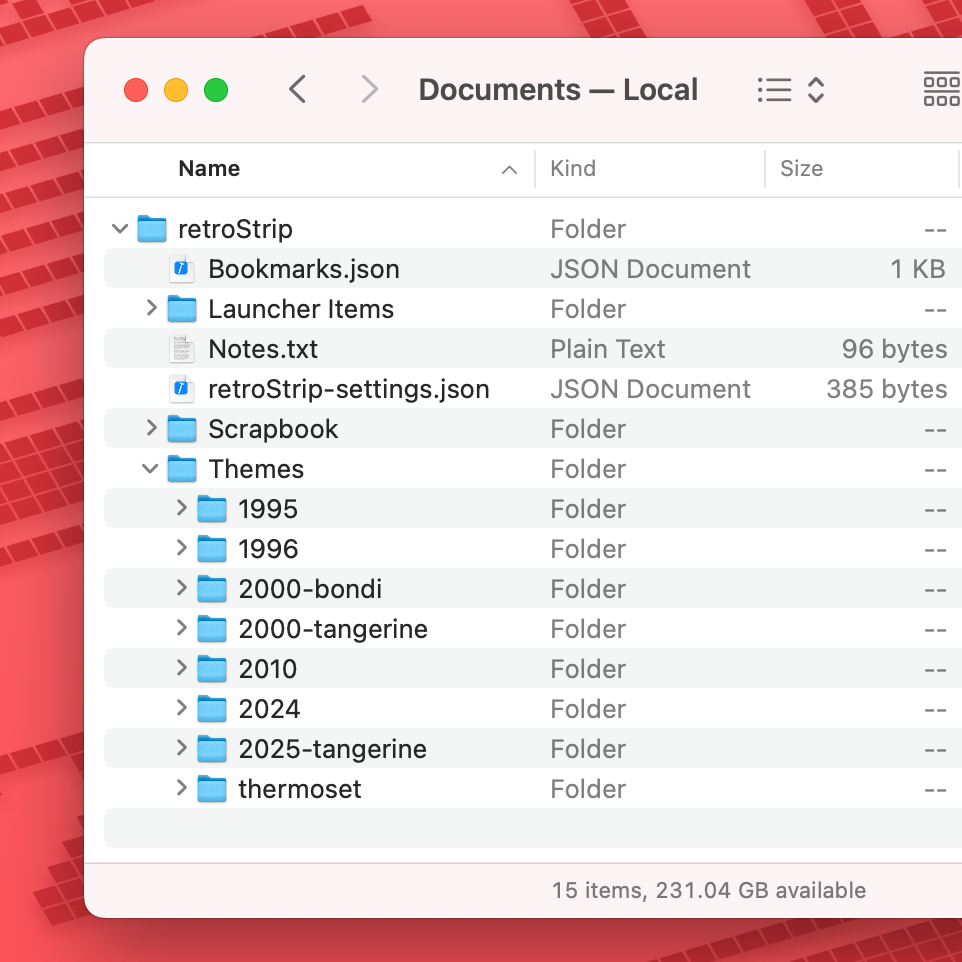
While not exactly a feature, all of this is stored in the local Documents directory an accessible directory, so anyone handy with an image editor and a little JSON editing can add a theme, or edit the existing ones.